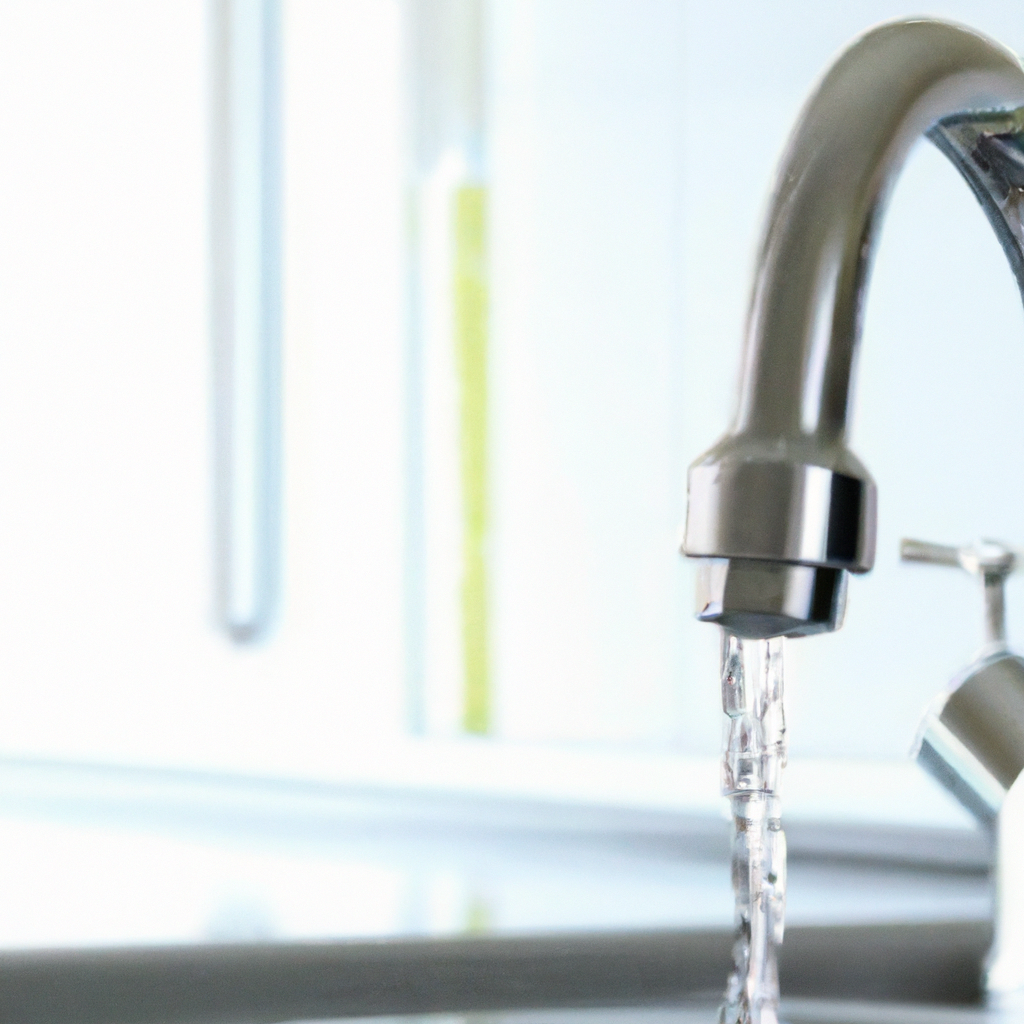
So you’ve decided it’s time to give your kitchen a little upgrade and install a new faucet. But wait, where do you even start? Don’t worry, we’ve got you covered with a step-by-step guide on how to successfully install a new kitchen faucet. From gathering the necessary tools to removing your old faucet and installing the new one, we’ll walk you through each and every detail so you can tackle this task with confidence. Say goodbye to those leaky handles and say hello to a sleek and functional kitchen upgrade!

Preparation
Before you begin installing your new kitchen faucet, it’s important to gather all the necessary tools and materials. You’ll typically need a wrench, pliers, a screwdriver, and plumber’s putty or silicone caulk. It’s also a good idea to have a bucket or towel nearby to catch any water that may leak during the process. Once you have everything you need, the first step is to turn off the water supply.
Removing the Old Faucet
To remove the old faucet, start by turning off the water supply. This can usually be done by shutting off the valves located underneath the sink. Once the water supply is turned off, open the faucet to drain any remaining water in the lines. Next, disconnect the supply lines from the faucet using a wrench or pliers. After that, locate and remove the faucet mounting nuts, which are typically located underneath the sink. Once the mounting nuts are removed, you can take out the old faucet.
Preparing for the New Faucet
Now that the old faucet has been removed, it’s time to prepare for the installation of the new faucet. Start by cleaning the sink surface thoroughly to ensure a clean and smooth installation. If your new faucet requires it, apply plumber’s putty or silicone caulk to create a watertight seal between the sink and the faucet. This step is essential to prevent any water leakage. Finally, insert the deck plate or mounting gasket provided with the new faucet.
Installing the New Faucet
To install the new faucet, begin by positioning it on the sink surface. Make sure it aligns properly with the mounting holes. Once the faucet is in position, secure it with the mounting nuts or screws that came with the faucet. Use a wrench or pliers to tighten them, but be careful not to overtighten as it could damage the faucet or sink. Next, attach the supply lines to the designated connections on the faucet. If your new faucet has a sprayer, make sure to connect it as well.

Checking for Leaks
After the new faucet is installed, it’s time to turn on the water supply and check for any leaks. Slowly open the valves underneath the sink and let the water flow through the faucet. Take a close look at all the connections and joints to ensure there are no visible leaks. If you notice any leaks, use a wrench or pliers to tighten the connections until the leaks stop. It’s important to address any leaks promptly to avoid water damage or wasted water.
Finishing Touches
Once you have confirmed that there are no leaks, it’s time for the finishing touches. Clean up any excess plumber’s putty or silicone caulk around the base of the faucet. This will give your installation a clean and professional look. Then, reattach any components that were removed during the installation process, such as the escutcheon or handles. Finally, test the faucet’s functionality by turning on both hot and cold water. Make sure the water flows smoothly and adjust any handles or knobs if necessary. Congratulations, you can now enjoy your new kitchen faucet!

Common Challenges
While installing a new kitchen faucet is generally a straightforward process, there may occasionally be some challenges that arise. One common challenge is difficulty removing the old faucet, especially if it has been in place for a long time and has become stuck. In these cases, applying penetrating oil to the mounting nuts and using a wrench or pliers with more leverage may help loosen the old faucet.
Another potential challenge is dealing with mismatched pipe sizes. Sometimes the supply lines of the old faucet may differ in size from the connections of the new faucet. In such cases, additional adapters or fittings may be needed to ensure a proper and secure connection. It’s important to consult the manufacturer’s instructions or seek guidance from a professional if you encounter this issue.
Leaking connections can also be a common challenge during installation. If you notice any leaks after turning on the water supply, it’s important to tighten any loose connections. Avoid overtightening as it can damage the faucet or fittings. If the leaks persist, it may be necessary to uninstall the faucet and inspect the connections for any damage or wear. In such cases, it’s advisable to seek the help of a professional plumber.
Lastly, inadequate water pressure can sometimes be a challenge, especially if you’ve installed a faucet with a sprayer. This can be attributed to a variety of factors, such as clogged aerators or supply line obstructions. In these cases, you can try cleaning the aerator or checking the supply lines for any blockages. If the issue persists, it may require professional assistance to diagnose and resolve the problem.
Frequently Asked Questions
Q: How long does it take to install a kitchen faucet? A: The time it takes to install a kitchen faucet can vary depending on factors such as experience level and the complexity of the installation. On average, it can take anywhere from 30 minutes to 2 hours to complete the installation.
Q: Can I install a faucet without a professional plumber? A: Yes, installing a kitchen faucet is generally a DIY-friendly task. With the right tools and following the manufacturer’s instructions, most homeowners can successfully install a faucet themselves. However, if you are uncomfortable or unsure about the process, it’s always wise to consult a professional plumber.
Q: What should I do if there is a leak after installation? A: If you experience a leak after installing a new kitchen faucet, start by tightening any loose connections or joints. If the leak persists, it may be necessary to uninstall the faucet and inspect the connections for any damage or wear. In such cases, it’s advisable to seek the help of a professional plumber who can diagnose and resolve the issue.

Tips and Warnings
- Always read and follow the manufacturer’s instructions provided with your new faucet. These instructions often contain specific guidelines and recommendations for installation.
- Use Teflon tape or thread sealant on the connections to ensure a watertight seal and prevent any leaks.
- Avoid overtightening the connections, as this can damage the faucet or fittings. Tighten them just enough to create a secure and watertight connection.
- Make sure to completely shut off the water supply before starting the installation process to avoid any potential water damage.
- Keep track of small parts, such as screws or washers, during the disassembly of the old faucet. Losing these components can make the installation more challenging.
Conclusion
Installing a new kitchen faucet can be a rewarding and relatively simple DIY project. By following the steps outlined in this guide and using the right tools and materials, you can successfully replace your old faucet with a new one. Remember to always turn off the water supply, prepare the workspace, and carefully follow the manufacturer’s instructions. With a little effort and patience, you can enjoy the enhanced functionality and aesthetic appeal of your new kitchen faucet. Happy installing!
